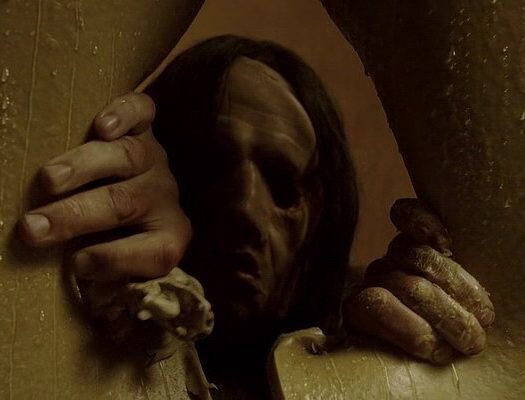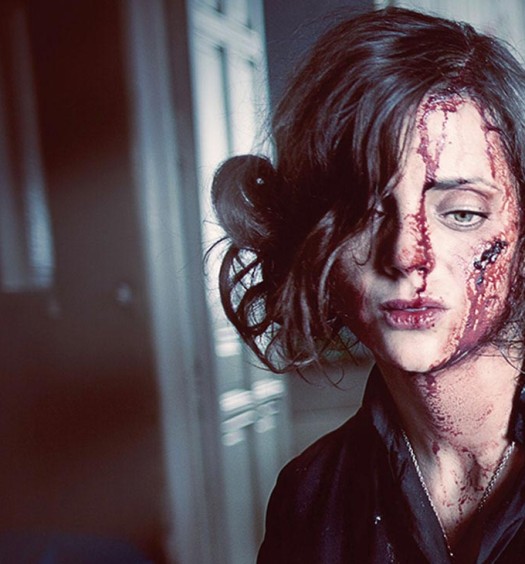Jordan Peele gave himself one hell of a problem. He shook up the cinematic landscape with his debut feature and enjoyed an impressive award tour as the year wound down. How exactly do you follow that up?
It’s the most obvious narrative tethered to the lead-up for his sophomore feature, but it’s a worthy question. Many filmmakers before him have made a similar splash without living up to their first impression, and in some cases, faded away altogether.
Us may not cement Peele’s legacy yet (he’s only 40 years old, and miles to go before he sleeps), but it proves he’s no fluke. What’s more, it establishes a defining characteristic to his films that should carry over throughout his career: a smorgasbord of unshakable sights and symbols that begs to be rewatched and overanalyzed.

It’s almost a slasher formula on the surface; the monsters are introduced early on, and we follow the protagonists as they try to escape.
But Peele isn’t simply drawing up the same plays that made Get Out such an impressive introduction—with Us, he’s altering the formula in all the right ways. Truly, this is more of a horror film in the classical sense. In fact, it’s almost a slasher formula on the surface; the monsters are introduced early on, and we follow the protagonists as they try to escape and/or overcome their adversaries.
This throwback methodology will work to varying degrees depending on what audiences want out of the movie. There are plenty of moments where you’ll want to yell at the screen, cursing the characters for not doing “the right thing” or taking too many risks. For those expecting heroes who’re as calculated and clever as Chris in Get Out, it may be a bit frustrating, even if Peele’s intention is to entertain.
And yet, there’s a subversive quality to this strategy. Winston Duke, who established himself as the fierce and intimidating M’Baku in Black Panther, is little more than a bumbling nerd here. Instead, it’s Lupita Nyong’o who takes up arms and risks life and limb to save her family.

In a demanding dual role, she delivers across the board in what will likely be the one of the most talked-about performances of the year.
Likewise, it’s Nyong’o who excels in the acting column here as both predator and prey. In a demanding dual role, she delivers across the board in what will likely be the one of the most talked-about performances of the year, let alone one the best in the horror genre.
Speaking to the story of Us would be to give away too much; if you’ve seen the trailer, you know enough already. Even stating the theme would be a spoiler of sorts. But whereas race was at the center of the conversation surrounding Get Out, know that Peele has more on his mind the second time around—without shying away from social commentary.
It should be noted, though, that the last few minutes of the film will likely leave audiences with split opinions. For some, it’ll enrich the experience, but for others, it’ll cast a shadow over everything that comes before it.

The most impressive aspect is the visuals. Only two films in, Peele is already a master at cultivating horror iconography from scratch.
While the technical aspects of the film are aces—particularly Mike Gioulakis’ cinematography, Ruth De Jon’s production design, and Michael Abels’ score—the most impressive aspect is the visuals. Only two films in, Peele is already a master at cultivating horror iconography from scratch. Get Out gave us the Sunken Place, the deer head, and a new perspective on Froot Loops and TSA. With Us, it’s the gold scissors, the red jumpsuits, the bunny rabbits, and a particular time of day and coinciding bible verse.
That’s precisely why we’ll be talking about Jordan Peele’s films for decades to come—they’re not just good, they’re memorable. They demand to be seen a second time and talked about at length, and they create a visual lexicon that feels equipped to stand the test of time. In other words, it does precisely what horror movies do when they’re at their best.

‘Us’ Blends Iconic Imagery with a Classic Horror Formula and Cryptic Commentary [Review]
Chilling
With ‘Us’, Peele delivers an expertly crafted throwback horror film and introduces another collection of memorable genre iconography.































